Wearing a prosthetic should feel like gaining back what was lost—mobility, comfort, and the freedom to move with ease. But for many people, that’s not the experience they have. Instead of support, they get soreness. Instead of comfort, they feel constant discomfort. Over time, a poorly fitted prosthetic doesn’t just make life harder—it can cause real, long-term harm.
Pain is often the first warning sign. But if ignored, that pain can turn into injury, joint problems, posture issues, or even infections. And what starts as something small—like a bit of rubbing or pinching—can lead to bigger setbacks if the fit isn’t corrected early.
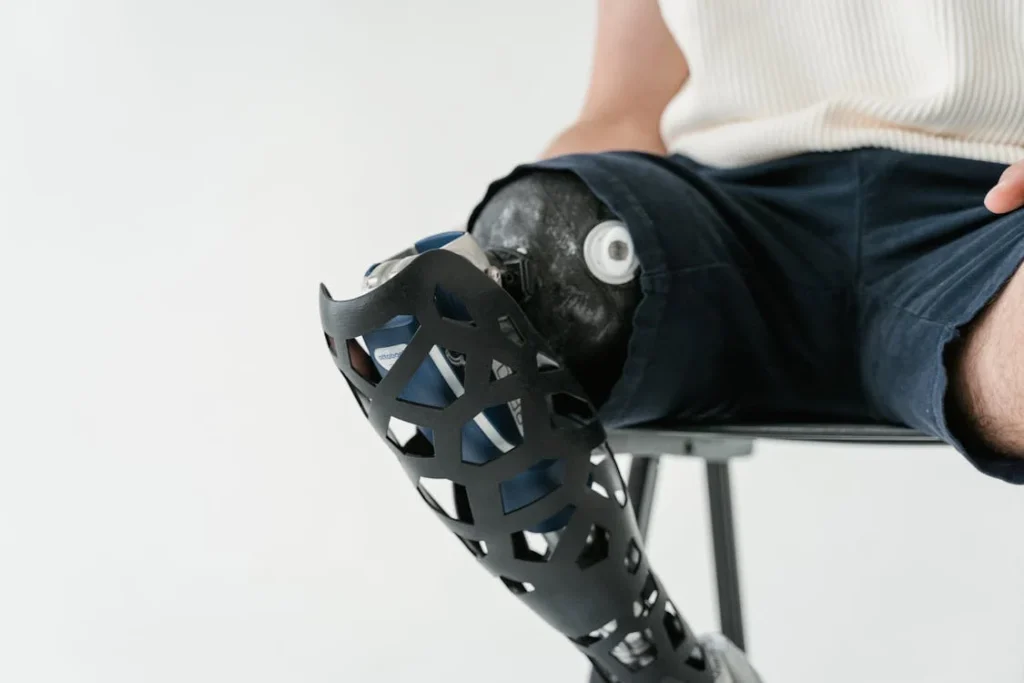
Why Fitment Matters From Day One
The Foundation of Comfort
When a person receives a prosthetic, one of the first things they notice is how it feels when worn. That first impression matters more than most people realize.
If the prosthetic feels snug but supportive, soft in the right places, and balanced while standing or walking, it builds trust. The user feels encouraged to wear it more, to move more, and to start rebuilding their daily life.
But if the fit feels off—even just a little—it can create hesitation. A slight pinch. A bit of awkward pressure. Something that feels like it isn’t quite in the right place.
These small discomforts often get ignored at first. People assume it’s just part of the process, something their body will get used to. But the truth is, when a prosthetic doesn’t fit well, the body rarely “gets used to it.” It simply starts to compensate—and that’s where the trouble begins.
The Chain Reaction of Poor Fit
When a socket is too tight, it puts excess pressure on the soft tissues of the residual limb. This can lead to swelling, reduced circulation, and pain. When it’s too loose, it shifts with every movement, causing rubbing that leads to skin breakdown, blisters, or ulcers.
But these problems don’t stay isolated to the limb. The body naturally tries to protect itself. So if a leg prosthetic causes pain when walking, a person might shift their weight to the other leg or lean to one side. That shift changes how their hips move, how their back adjusts, and how their neck holds tension.
Over time, what started as a mild socket issue becomes a full-body misalignment. This can lead to chronic joint pain, poor posture, and even injuries in the unaffected limbs.
The same thing happens with upper limb prosthetics. If the fit causes strain, users might avoid using that side of their body altogether.
That lack of use weakens the muscles, leading to imbalance, limited motion, and overuse of the other arm or shoulder. It’s a domino effect that often goes unnoticed—until the damage is done.
The Emotional Weight of Discomfort
Pain doesn’t just wear on the body—it wears on the mind too. When every step hurts or every motion feels off, it creates frustration.
People become less willing to move, less excited about going out, or even ashamed of using their device in public. The mental load builds up quietly, but powerfully.
Some users begin to avoid wearing their prosthetic altogether. Others only wear it for short periods before removing it in relief. This inconsistent use makes adaptation harder, limits independence, and reduces the benefits that prosthetics are meant to provide.
What’s worse is that many don’t realize the source of the problem. They may blame themselves or think they’re simply not adjusting well—when in fact, it’s a fixable issue of fitment.
This emotional toll can affect confidence, relationships, and overall quality of life. The user may feel stuck, disappointed, or helpless.
And unfortunately, the longer these feelings persist, the harder it becomes to re-establish a sense of comfort and trust in the device—even after adjustments are made.
Fitment Is a Living Process
One of the biggest misunderstandings about prosthetics is the idea that fitment is a one-time event. Measure once, build the device, fit it, and move on.
But in reality, fitment is an ongoing relationship between the user and the device. The body changes. The way we move changes. What fits today might feel different a few weeks or months down the line.
Muscle tone can shift, especially as the user becomes more active. The shape of the residual limb can change due to healing, weight changes, or daily wear patterns.
Even weather and temperature can affect how the prosthetic feels against the skin. That’s why regular check-ins and adjustments are so important.
Ignoring these changes can turn a once well-fitting prosthetic into a source of daily discomfort. Many users don’t speak up because they think the pain is normal.
It isn’t. If something doesn’t feel right, it usually means something isn’t fitting right.
Getting ahead of these changes early is the best way to avoid serious problems later. A minor realignment, a different socket liner, or a new padding method can often solve the problem before it grows.
Paying Attention to the Early Signs
Often, the body gives small signs before real damage sets in. If your prosthetic feels slightly harder to put on, or you notice red marks after wear, those are signs worth paying attention to.
If your walk feels uneven or your muscles are sore in unusual places, your body might be telling you that something isn’t aligned.
It’s also worth noticing changes in behavior. Are you wearing your prosthetic for fewer hours? Are you avoiding certain movements you used to do comfortably? These may not seem like warning signs, but they are.
The earlier these issues are noticed and addressed, the easier they are to fix. That’s why ongoing care and honest communication matter so much. Fitment isn’t just about the first week—it’s about every week after that, too.
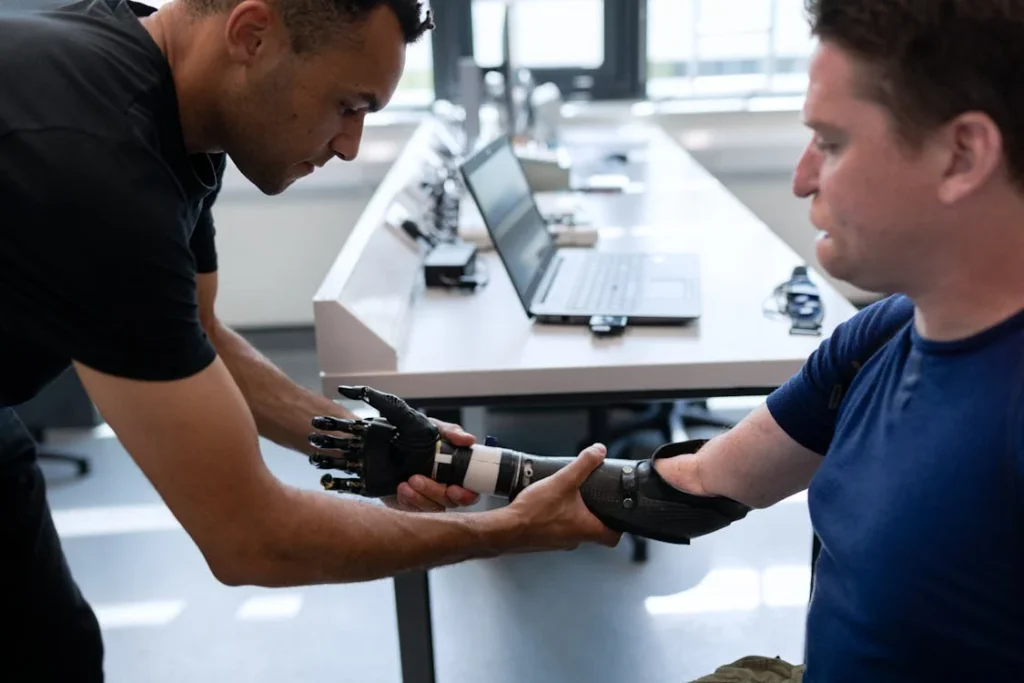
Hidden Injuries That Build Over Time
When Small Issues Become Big Problems
One of the most serious dangers of a poorly fitted prosthetic is that the damage often builds up slowly. It doesn’t usually start with sharp pain or a clear injury.
Instead, it begins with little things—mild soreness at the end of the day, a small blister that keeps coming back, a feeling of imbalance after walking for a while.
Because these signs are subtle, they’re often ignored. Users assume they’re normal. But this quiet damage is exactly what leads to long-term complications.
Over time, tissues become irritated, joints work harder to stay aligned, and skin doesn’t get a chance to heal properly. This kind of repeated strain wears the body down in a way that’s hard to reverse.
For example, a slightly misaligned foot prosthetic might cause a person to walk with a small tilt in their hips. After weeks or months, this tilt can lead to pressure on the lower back, inflammation in the knees, or tightness in the shoulders. The user might not even connect the pain to the prosthetic because the damage happened so slowly.
That’s why it’s important to treat discomfort seriously, even when it seems small. What you feel today can become what limits your movement tomorrow if it’s not corrected early.
The Cost of Compensation
The human body is incredibly smart. When one part isn’t working properly, other parts jump in to help. This is called compensation, and it happens all the time with poorly fitted prosthetics.
If a leg prosthetic doesn’t support balance, the person might rely more on their other leg. If an arm prosthetic is too heavy or awkward, the person might avoid using it and shift more work to their neck or spine.
While this helps in the short term, it creates extra load on parts of the body that were never meant to carry it.
Over time, this causes wear and tear that affects muscles, bones, and joints. It can also throw off a person’s center of gravity, making them more likely to fall or strain themselves during everyday tasks.
The damage caused by compensation isn’t just physical. It can also delay progress during rehabilitation.
The brain learns motion based on repetition, and if the prosthetic encourages unnatural movement, the brain ends up learning habits that are harder to fix later. This can slow down recovery and reduce the effectiveness of therapy.
Chronic Pain and Fatigue
When a prosthetic doesn’t fit well, the effort it takes to use it increases. Every step, grip, or turn requires more concentration and muscle power.
This constant physical strain leads to fatigue much faster. A person might find themselves getting tired halfway through the day or needing to sit down often.
This fatigue isn’t just about tired muscles. It’s also mental. The brain works harder to manage discomfort, to keep balance, and to avoid injury.
Over time, this leads to mental exhaustion, frustration, and sometimes even depression.
Chronic pain adds another layer. Pain that shows up daily—whether from pressure points, muscle strain, or skin irritation—can quickly become overwhelming.
It drains energy and motivation, making everyday tasks feel difficult or discouraging. In some cases, it may lead to the person giving up on the prosthetic altogether.
None of this is inevitable. But it starts with recognizing that discomfort should never be the norm. A prosthetic is meant to help you live better—not force you to work harder just to get through the day.
Infections and Skin Complications
The skin that makes contact with a prosthetic is sensitive. It’s exposed to pressure, sweat, friction, and heat for hours at a time. When the fit isn’t right, these conditions become worse.
Areas that rub too much can break open, even if it’s just a small crack or blister. If that opening isn’t treated or gets exposed to moisture, it can lead to infection.
Infections are serious because they don’t just affect the surface. They can travel deeper into tissue or even affect bone if not addressed quickly. In some cases, infections can slow healing, delay prosthetic use, and require medical treatment.
A well-fitted prosthetic reduces these risks by evenly distributing pressure and allowing proper airflow and hygiene.
But even with a good fit, the skin needs time to adjust. Users should be educated on how to care for their limb, how to recognize early warning signs, and when to ask for help.
Many long-term users of prosthetics know that comfort isn’t just about ease—it’s about health. When the skin is healthy, movement becomes easier and safer. That’s why proper fitment goes beyond just mobility—it’s a part of overall well-being.
Early Action Makes All the Difference
The biggest lesson we’ve learned through years of working with users is that small changes, made early, can prevent years of damage.
Adjusting the alignment, reshaping a socket, switching a liner, or even changing the angle of a joint can make a huge impact.
That’s why the relationship between the prosthetic provider and the user is so important. Ongoing communication, regular checkups, and a willingness to listen to the user’s experience are key.
A prosthetic should never be handed over and forgotten. It should be followed up on, adjusted as needed, and improved with time.
If you or someone you know is wearing a prosthetic that causes pain, it doesn’t have to stay that way. Many of these issues are fixable, especially when caught early.
The goal is not just to walk or move—but to do so without pain, without worry, and with full confidence.

Listening to Your Body: What Discomfort Is Trying to Tell You
Pain Is a Signal, Not an Obstacle
When something hurts, it’s your body trying to tell you something important. Unfortunately, many people using prosthetics have been told—or have come to believe—that some level of discomfort is just something they need to accept.
They may think, “Maybe I’m just not used to it yet,” or “This must be normal.” But pain is never something you should ignore.
Mild discomfort in the early stages of using a prosthetic might be expected as your body adjusts. But persistent pain, pinching, or skin irritation is a clear sign that something isn’t fitting the way it should.
The goal of a prosthetic is to support you, not test your endurance.
It helps to keep track of what you’re feeling. Does the pain show up right away, or after hours of use? Does it happen during certain activities or movements? Is the skin changing color or forming blisters?
These small observations can help guide necessary changes. The more clearly you can describe the problem, the easier it becomes to solve.
Movement Should Feel Natural
Using a prosthetic will never feel exactly like a biological limb, but it should feel natural enough that you forget about it during everyday tasks.
If you’re constantly adjusting, shifting your weight, or focusing on how to make each step work, the fit may be working against you.
Good fitment helps restore symmetry in your movements. It supports your weight evenly and responds to your pace, not the other way around.
Whether you’re walking across the room or lifting a bag of groceries, the motion should feel smooth, not forced.
One sign that something’s wrong is when you find yourself avoiding certain actions—like walking on slopes, reaching overhead, or standing for long periods. This may not feel like a big deal at first, but these changes in behavior can slowly reduce your mobility and confidence.
You deserve better than that. Motion should feel stable and reliable, not something to be cautious of every time you move.
Fatigue Is More Than Just Tired Muscles
Everyone gets tired after a long day, but if you’re finding yourself physically or mentally exhausted every time you wear your prosthetic, that’s another clue.
Poor fit can increase the amount of energy your body has to spend just to perform normal activities. Your muscles work harder. Your balance shifts more often. Your brain stays on high alert to avoid pain or missteps.
This kind of fatigue isn’t just tiring—it’s discouraging. It can lead to shorter wear times, reduced physical activity, and even emotional withdrawal. The frustration builds slowly, and many users don’t realize it’s connected to their prosthetic.
This is why follow-up care is important, not just at the beginning but throughout the journey. A small adjustment might make a big difference in how long and how comfortably you can wear your device.
Monitoring Skin Is Key
Skin is often the first area to show signs that a prosthetic isn’t fitting well. Look for areas that stay red for more than a few minutes after removal.
Watch for patches of dry, flaky skin, blisters, or any open areas. If your limb is swelling more than usual or showing dark spots, these are clear signs that the fit is uneven or too tight.
Catching these issues early can prevent serious complications. Once the skin is broken, healing can take weeks, and it might mean putting the prosthetic aside until things improve.
That pause in use affects strength, balance, and emotional progress.
To protect your skin, always clean the residual limb gently after wear, allow it to breathe, and monitor for any changes.
If something feels wrong—even slightly—it’s worth reaching out to your prosthetic care team to talk about adjustments. Waiting too long can turn a small irritation into a big setback.
Your Comfort Affects Everything Else
When you’re comfortable, you move more. You socialize more. You participate in life more. That’s why the conversation about prosthetic fitment goes beyond just technical measurements—it’s about the whole person.
Fitment affects how you feel physically, but also how confident and free you feel in your daily life.
Discomfort creates hesitation. Comfort builds momentum. It’s not about being able to move—it’s about wanting to move.
When your prosthetic feels like part of your body, you trust it. That trust opens doors. It gives you the freedom to plan your day without worrying about soreness, balance, or awkward movement.
This is why prosthetic users—and their care teams—must treat comfort as a top priority. It’s not a luxury. It’s a sign that everything is working as it should.
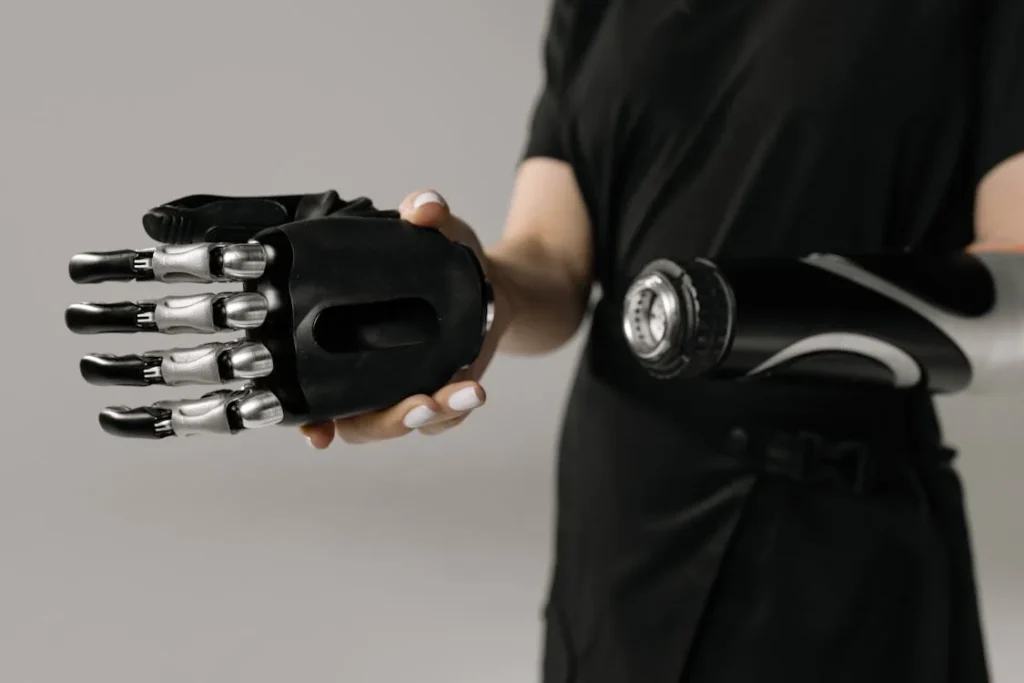
Why Ongoing Fitment Support Matters
The Body Doesn’t Stay the Same
A common misunderstanding is that once a prosthetic fits well, it will always fit well. But the human body is constantly changing. This is especially true after limb loss. In the first several months—and even years—after amputation, the residual limb can shrink, swell, or shift in shape.
Muscle mass may change depending on activity level. Weight can fluctuate. Even a person’s walking style may evolve as they gain more strength or confidence.
These changes are completely natural. But they also mean that a prosthetic that felt perfect in the beginning might start to feel less comfortable over time.
A socket that once held firm might become too loose. Pressure may begin to build in areas that were once fine. If these changes are ignored, the result can be pain, instability, or long-term strain on the rest of the body.
That’s why follow-up support is not a bonus—it’s a necessity. Prosthetic fitment is not a finish line. It’s an ongoing relationship between the user, their body, and their device.
Small Adjustments Can Have a Big Impact
A good prosthetist knows that sometimes the tiniest tweak can change everything. A few millimeters shaved off the socket edge, a shift in the liner, a small change in alignment—these are not dramatic changes. But for the person wearing the device, they can be life-changing.
One of the things that sets high-quality care apart is the willingness to pay attention to these small details. It requires listening, watching, and taking the user’s concerns seriously.
Even if the device looks fine, if the user says something doesn’t feel right, that’s enough reason to investigate.
Some users hesitate to come back for minor issues. They worry about being seen as difficult or expect that some discomfort is just normal.
But good prosthetic care means creating an environment where those concerns are welcomed and addressed early.
It’s not about redoing everything. It’s about refining the fit over time to match the changing needs of the user. This approach keeps the prosthetic feeling natural and supportive—not just functional.
The Value of Regular Checkups
Just like your teeth or your eyes, your prosthetic needs regular checkups. These aren’t just for when something goes wrong—they’re there to prevent problems.
During these visits, the care team can look for signs of wear, changes in posture or gait, and skin condition. They can also reassess the fit, the alignment, and the balance of the prosthetic in real-world use.
In many cases, users don’t even notice how much they’ve been compensating until the problem is pointed out. Maybe one shoulder is higher than the other. Maybe the foot strikes the ground slightly off-center.
These details might not be obvious day to day, but over time, they can create strain and reduce the efficiency of movement.
By catching these things early, small adjustments can be made quickly and easily. The user walks out more comfortable, more confident, and better supported.
If your prosthetic provider doesn’t encourage follow-ups, it might be time to ask for them. A quality care team knows that good fitment is a process, not a one-time fix.
Psychological Comfort Is Just as Important
Physical comfort is only part of the story. There’s another layer of fitment that’s often overlooked: psychological comfort.
This includes how safe a person feels while wearing the prosthetic, how confident they are in public, and how much they trust the device to respond when needed.
A poorly fitted prosthetic erodes that trust. If someone feels even slightly unsure about whether their device will stay in place or perform correctly, it changes how they move.
They become guarded. They limit their steps. They hesitate before sitting, standing, or lifting. Over time, these behaviors affect posture, muscle tone, and mood.
On the other hand, a prosthetic that fits well—one that feels dependable and supportive—frees the user. It gives them confidence to try new things, to move naturally, and to engage fully in daily life.
This mental side of comfort is not something that gets fixed by one socket or one alignment. It’s built over time, through consistent support, clear communication, and a commitment to improvement.
Your Voice Matters in the Process
A prosthetic is only as good as its fit, and the fit is only as good as the communication between the user and their care team. That’s why it’s essential for users to speak up when something doesn’t feel right.
You know your body better than anyone. If something feels different—even if you can’t explain it perfectly—it’s worth mentioning.
Maybe your gait feels off. Maybe your limb feels more tired. Maybe your posture doesn’t feel as balanced. These aren’t minor details—they’re important signals.
A good care team will take those signals seriously. They’ll ask questions, observe how you move, and test adjustments patiently.
They won’t rush or dismiss your feedback. Because they know that your experience is the most accurate measure of whether a prosthetic is doing its job.
Fitting a prosthetic isn’t about meeting technical standards. It’s about helping you feel stable, strong, and at ease in your body again.
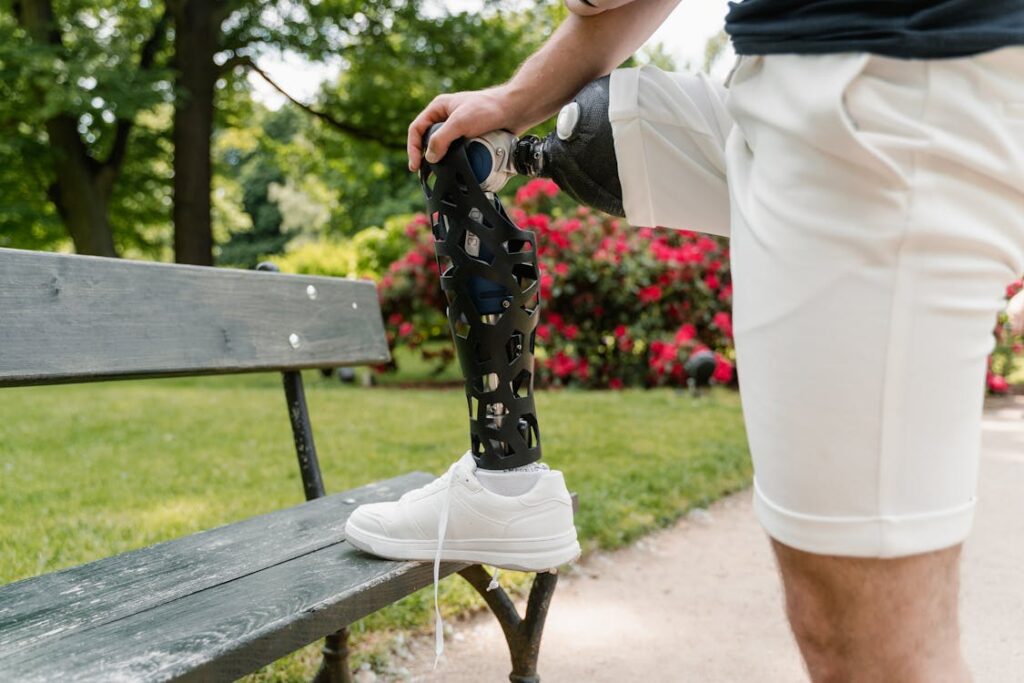
What to Do If Your Prosthetic Doesn’t Feel Right
Start by Paying Close Attention
Many prosthetic users try to push through discomfort, hoping it will pass on its own. But this rarely works.
Discomfort is often your first sign that something needs to change, and paying attention early can prevent future complications.
Notice when and where the discomfort starts. Is it at the start of the day or after extended use? Does it happen only during certain movements or after long periods of standing?
Even the smallest observations can help your care provider pinpoint the issue. Sometimes, it’s a pressure point caused by socket shape.
Other times, it’s a misalignment that only shows up during motion. These aren’t always easy to see—but they can usually be solved once they’re identified.
Writing down what you feel, when it happens, and how your body reacts can create a clear picture. This gives your prosthetist more insight than any scan or measurement could.
Communicate Honestly with Your Care Provider
If your prosthetic doesn’t feel right, speak up. There’s no shame in asking for help. A good prosthetic provider expects adjustments to be part of the process.
In fact, they should welcome your input and work closely with you to get the fit just right.
Sometimes, users feel uncomfortable giving feedback because they worry they’ll seem ungrateful or high-maintenance.
But this isn’t about complaining—it’s about protecting your health and making sure your prosthetic does what it’s supposed to do: support you.
You don’t need to know the technical terms. Just describe what you’re feeling in your own words.
Whether it’s a sharp pinch, a feeling of imbalance, or a dull ache after walking, your experience is valuable. It’s often the key to figuring out what’s not working.
Good providers will ask follow-up questions, look at your limb and how you move, and make careful changes based on what you’ve told them. If they don’t take your concerns seriously, it may be worth finding someone who will.
Don’t Wait for the Problem to Get Worse
One of the biggest mistakes people make is waiting too long before seeking help. They assume the issue will fix itself or that it’s just part of the adjustment period. But problems that go unaddressed tend to get worse, not better.
A small sore spot can turn into an ulcer. A slight misalignment can cause serious joint strain. And frustration can grow into avoidance, where users stop wearing their prosthetic altogether. This not only affects physical health, but emotional wellbeing, too.
If something doesn’t feel right, it’s always worth having it checked. Even if the solution is simple, taking action now can save months of discomfort and prevent long-term damage. It’s easier to fix a small problem early than to undo the effects of one that’s been ignored.
Know When to Ask for a Refit
Sometimes, a prosthetic simply no longer fits because your body has changed. That’s completely normal. As you move more, get stronger, or recover from surgery, the shape of your limb can shift.
You might gain or lose weight, or your muscles might become more toned. All of this affects how the prosthetic fits.
If you notice that it’s harder to put on, feels loose, or no longer supports your weight evenly, it may be time for a complete refit. This doesn’t mean your current prosthetic is a failure—it just means it needs to be adapted to the new version of your body.
A proper refit doesn’t start from scratch. Your provider will often reuse parts of your current device and update the components that need to change.
The goal is to make the prosthetic match your body again—so you can get back to moving freely and confidently.
Understand That You Deserve Comfort
Many prosthetic users have been told to “get used to it” when they feel pain or discomfort. This mindset is outdated and unhelpful. A prosthetic is not supposed to hurt. It’s supposed to help you live more easily.
If you’re uncomfortable, you don’t have to accept that as your reality. There are better solutions out there, and you have every right to ask for them. Your comfort is not a luxury—it’s essential to your health and quality of life.
Too often, people settle for less because they’ve never experienced what a well-fitted prosthetic truly feels like. But once they do, the difference is undeniable.
They walk longer. They smile more. They rejoin the parts of life they’d pulled away from. Comfort leads to confidence, and confidence leads to independence.
The first step is believing that you deserve that experience—and being willing to speak up until you get it.
Keep Learning and Stay Involved
The more you understand about how your prosthetic works and how your body responds to it, the more empowered you’ll be to make good decisions about your care. Ask questions. Stay curious.
Don’t be afraid to learn about how fitment works, how alignment affects your posture, or what kinds of materials might work better for your skin.
Staying involved in the process makes it more likely that your prosthetic will keep working well for you in the long run. It also gives you more confidence when changes are needed because you understand why those changes matter.
When you work with your care team instead of just receiving instructions, the whole experience becomes more collaborative and rewarding.
You’re not just wearing a prosthetic—you’re building a relationship with it. And like all good relationships, it takes communication, trust, and care to keep it strong.
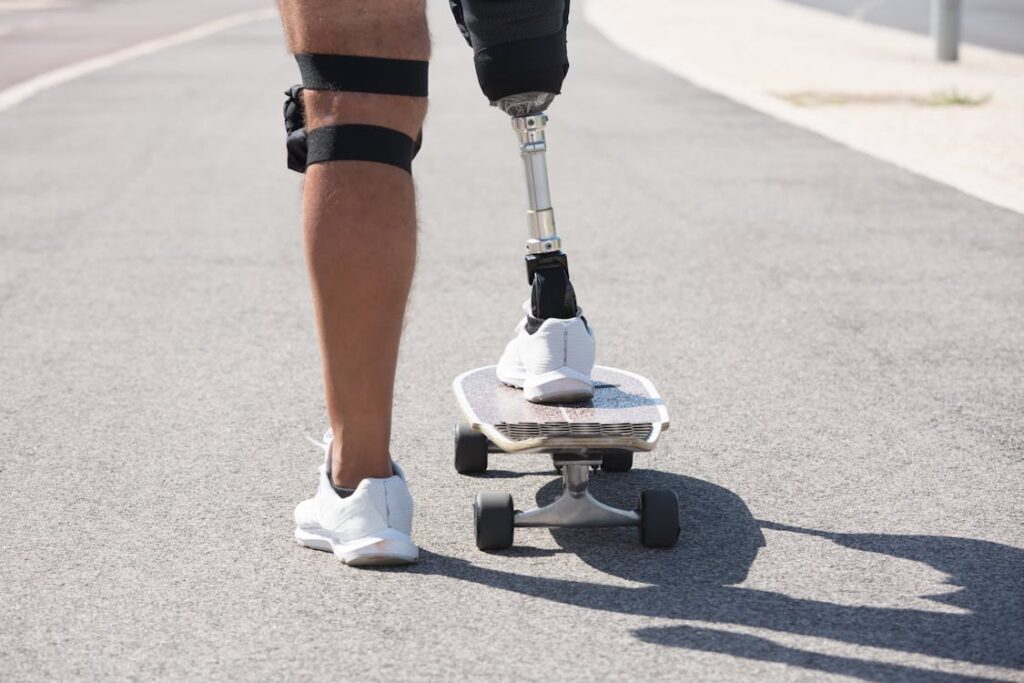
Moving Forward With Comfort and Confidence
A Better Fit Changes Everything
By now, it’s clear that fitment is far more than a technical detail—it’s the foundation of your entire prosthetic experience. When the fit is wrong, everything else suffers.
But when it’s right, the changes ripple out across every part of life. Your movements feel smoother. Pain becomes rare. Confidence returns. You start to think less about what your prosthetic can’t do and more about what you can do.
It’s not just about physical comfort. It’s about feeling more like yourself again. Whether it’s walking across a room, climbing stairs, riding a bicycle, or simply standing tall in front of a mirror—those moments matter.
They remind you that you’re capable, strong, and ready to participate in life fully.
Fitment Is an Ongoing Partnership
What makes a long-term difference isn’t just the quality of the prosthetic—it’s the quality of the care. The most successful outcomes come from users who feel heard, supported, and involved.
That starts with good communication and continues through regular check-ins, timely adjustments, and a shared commitment to keeping your prosthetic working at its best.
Whether you’re new to prosthetics or have been using one for years, there’s always room for more comfort, more ease, and more mobility.
And it begins with listening to your body, asking for what you need, and trusting that it’s okay to expect better.
Conclusion
A poorly fitted prosthetic isn’t just uncomfortable—it can quietly cause long-term harm. From joint pain and muscle fatigue to skin damage and emotional strain, the effects of bad fitment reach deep. But the good news is that these problems are not something you have to live with.
Fitment is not just a beginning—it’s a process. And it should evolve as your body and life do. By staying aware, speaking up, and staying involved in your care, you can protect your body, improve your movement, and regain control of your everyday life.
The goal isn’t just to wear a prosthetic—it’s to live with one that supports you in every way. Comfort is possible. Freedom is possible. And it all starts with the right fit.



